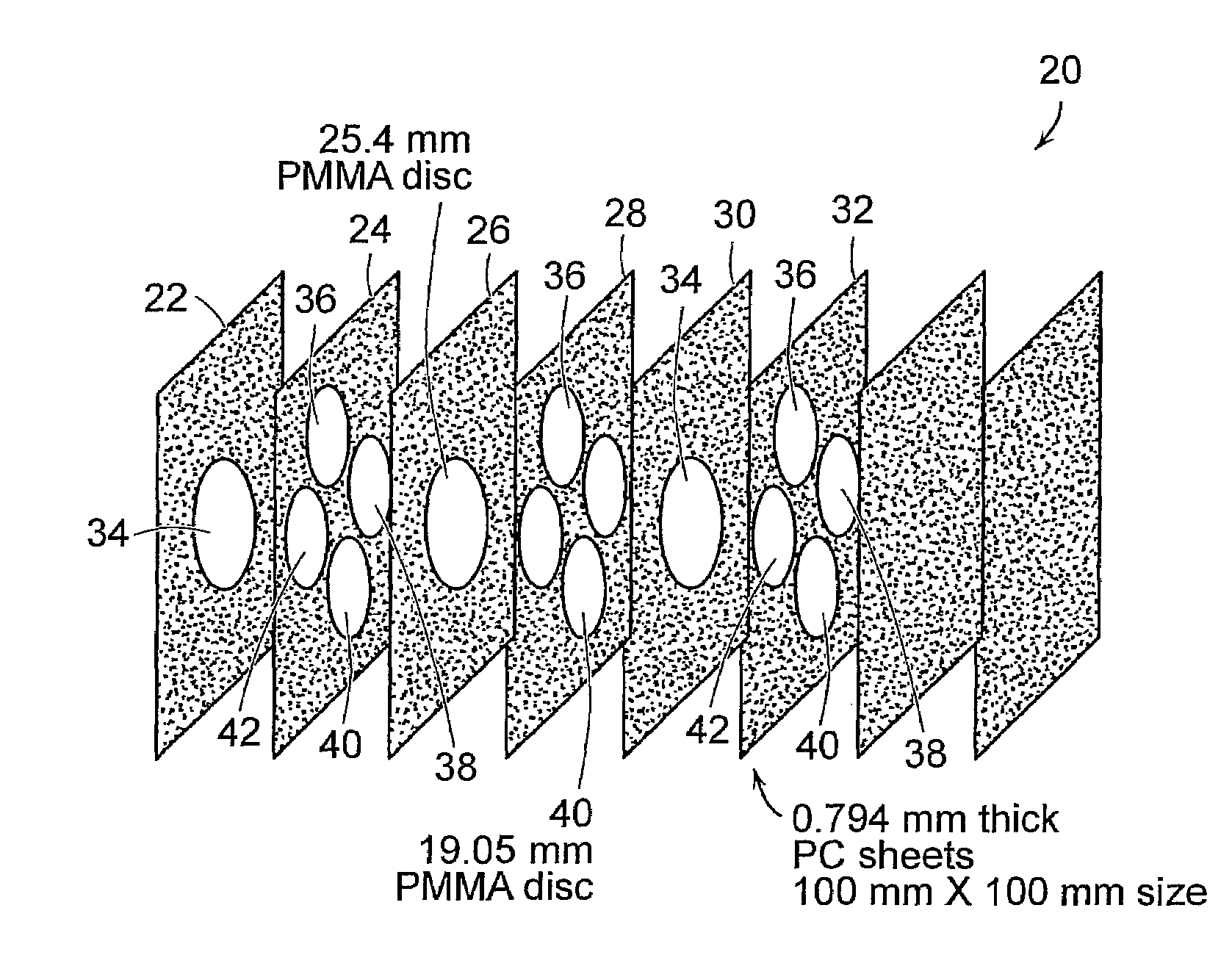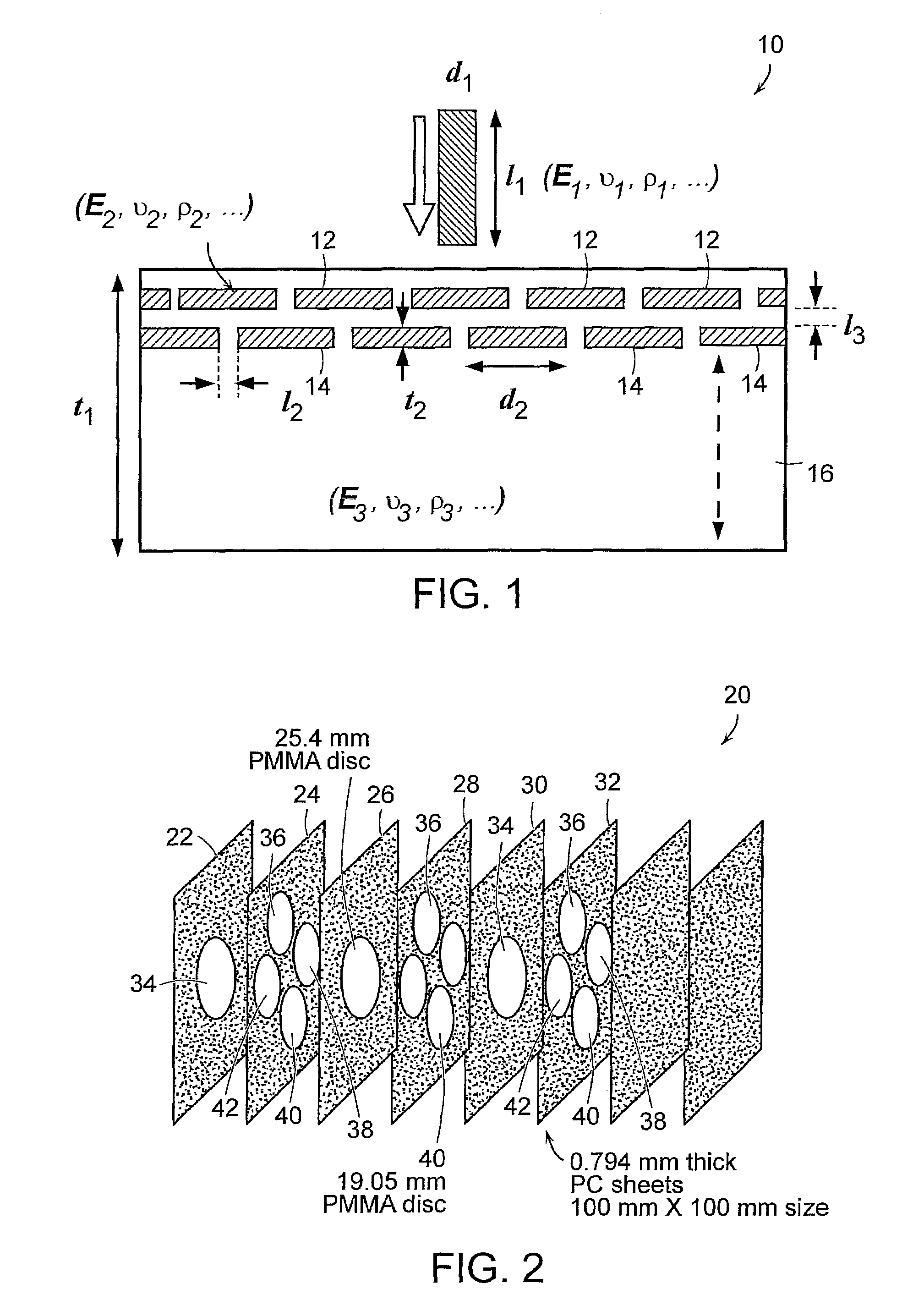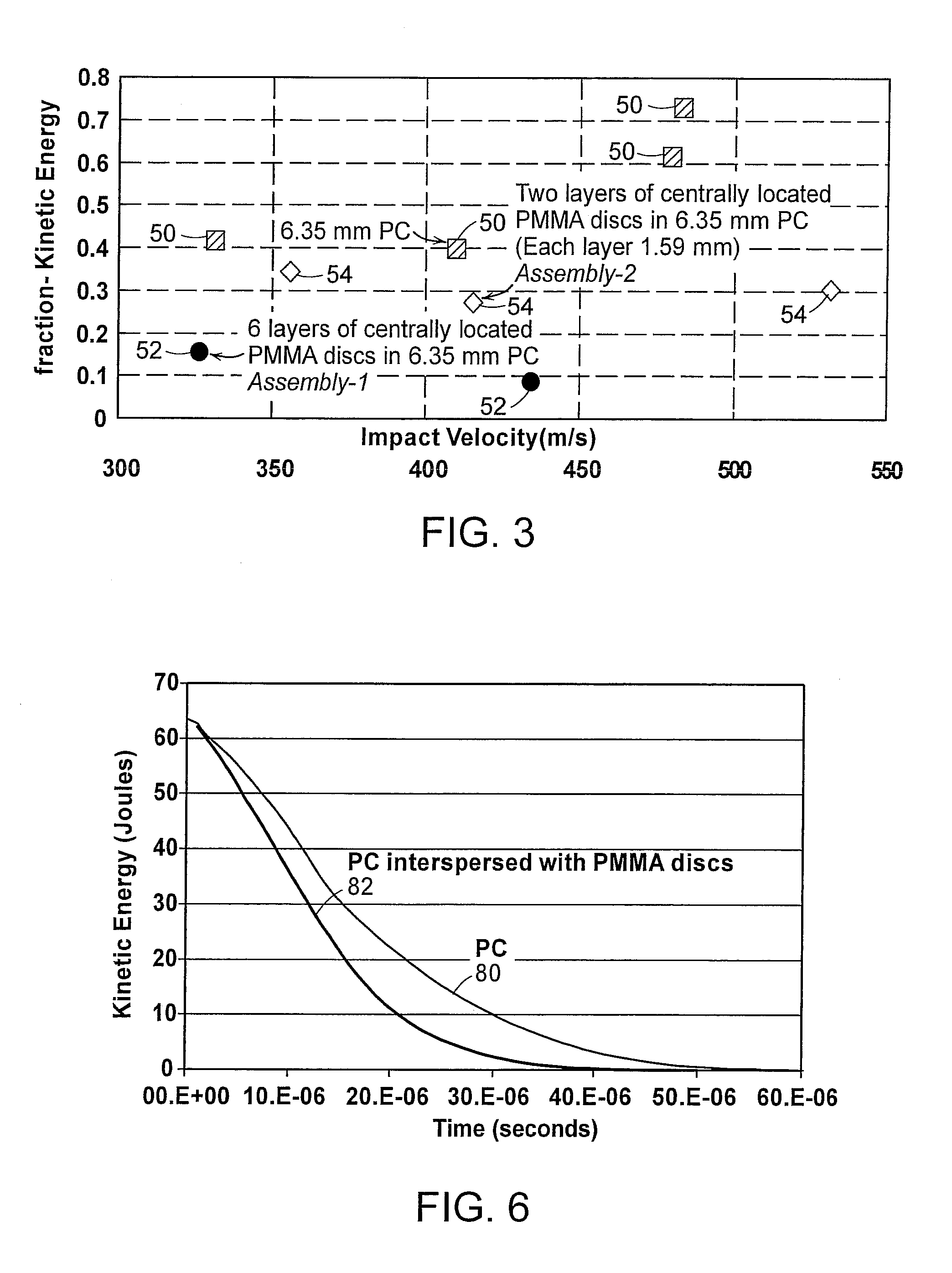Hierarchical material assemblies and articles for use in projectile impact protection
a technology ofhierarchical materials and assemblies, applied in the direction of shields, other domestic articles, transportation and packaging, etc., can solve the problem that the matrix may not be fully continuous, and achieve the effect of dissipating the impact energy of the projectile, preventing the propagation of catastrophic cracks, and maintaining structural integrity
- Summary
- Abstract
- Description
- Claims
- Application Information
AI Technical Summary
Benefits of technology
Problems solved by technology
Method used
Image
Examples
Embodiment Construction
[0017]Polymers are conventionally employed for many impact related applications due to their low densities, low cost, high durability and rate dependent mechanical properties which exhibit a wide range of characteristics including elastic stiffness, yield stress, inelastic deformation by crazing versus and / or yielding, post-yield deformation, and failure mechanisms. These applications range from visors, shields, windows, canopies, and portals of vehicles to non-transparent composite body armor. Recent developments to further manipulate the microstructure of polymers by the incorporation of nanoscale particles further expand the ability to tailor mechanical behavior. Exploitation of the differences in mechanical response of different polymers provides the potential to design multi-scale heterogeneous material assemblies that provide dramatic enhancements in energy absorption of projectile impacts while maintaining the light weight of the homopolymer.
[0018]The present invention involv...
PUM
 Login to View More
Login to View More Abstract
Description
Claims
Application Information
 Login to View More
Login to View More - R&D
- Intellectual Property
- Life Sciences
- Materials
- Tech Scout
- Unparalleled Data Quality
- Higher Quality Content
- 60% Fewer Hallucinations
Browse by: Latest US Patents, China's latest patents, Technical Efficacy Thesaurus, Application Domain, Technology Topic, Popular Technical Reports.
© 2025 PatSnap. All rights reserved.Legal|Privacy policy|Modern Slavery Act Transparency Statement|Sitemap|About US| Contact US: help@patsnap.com



